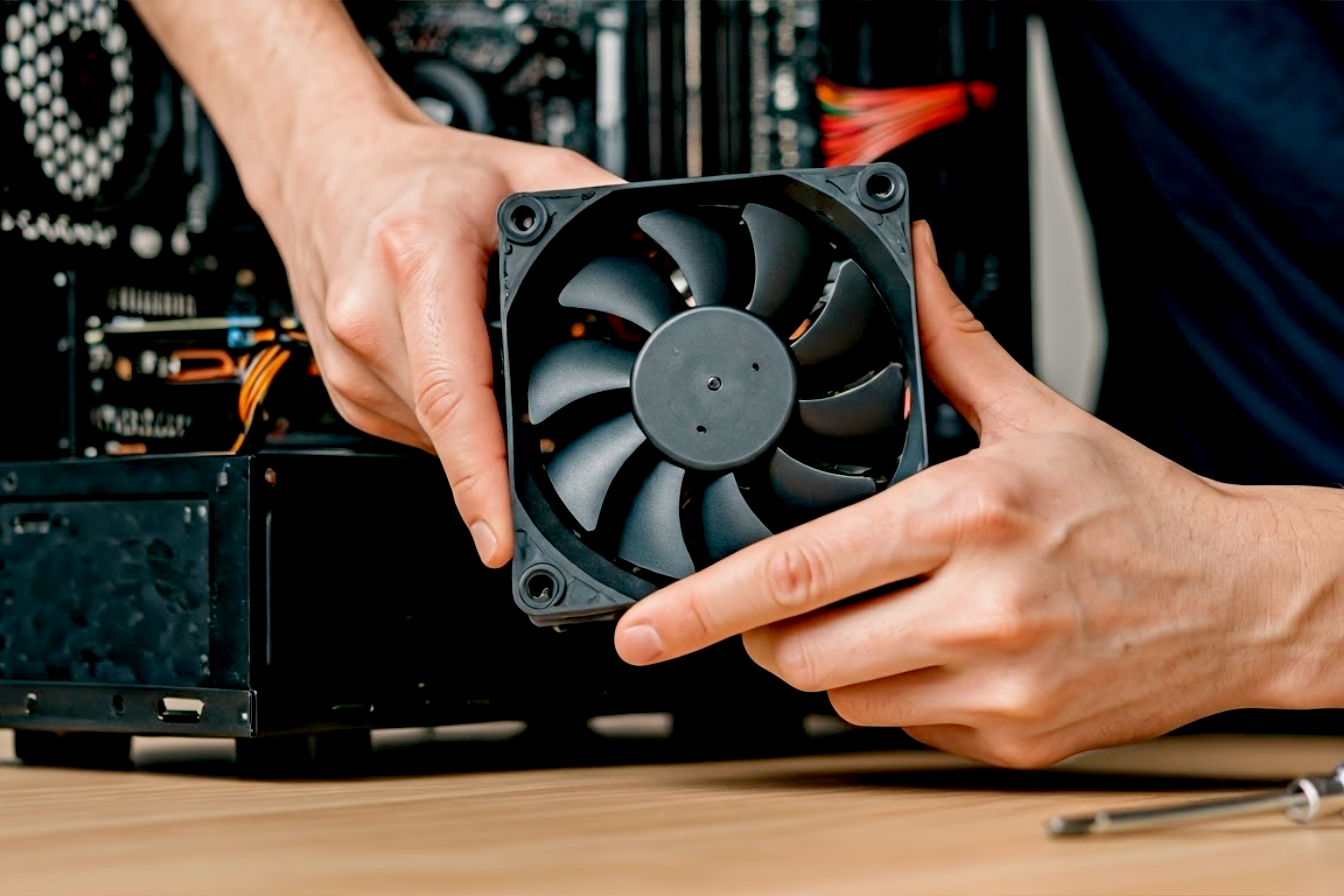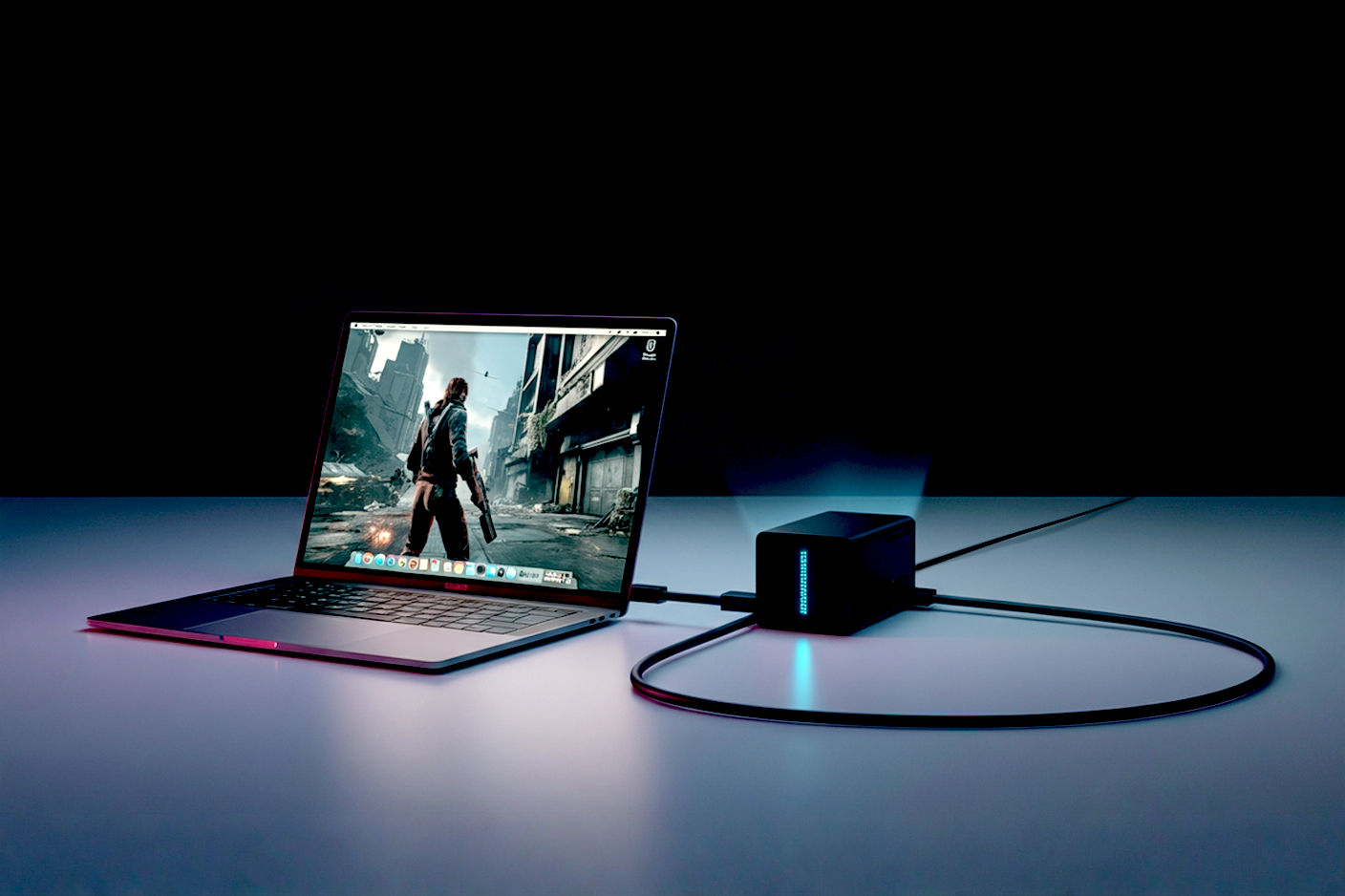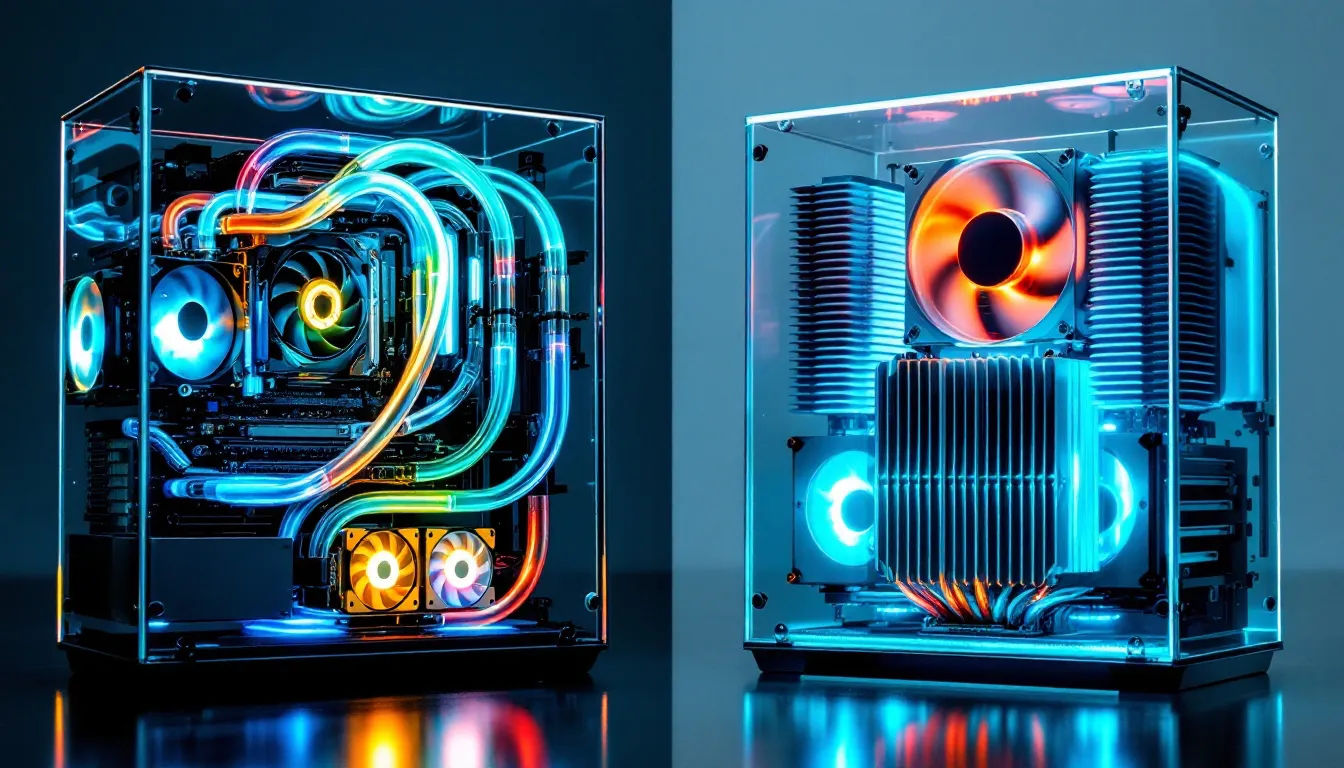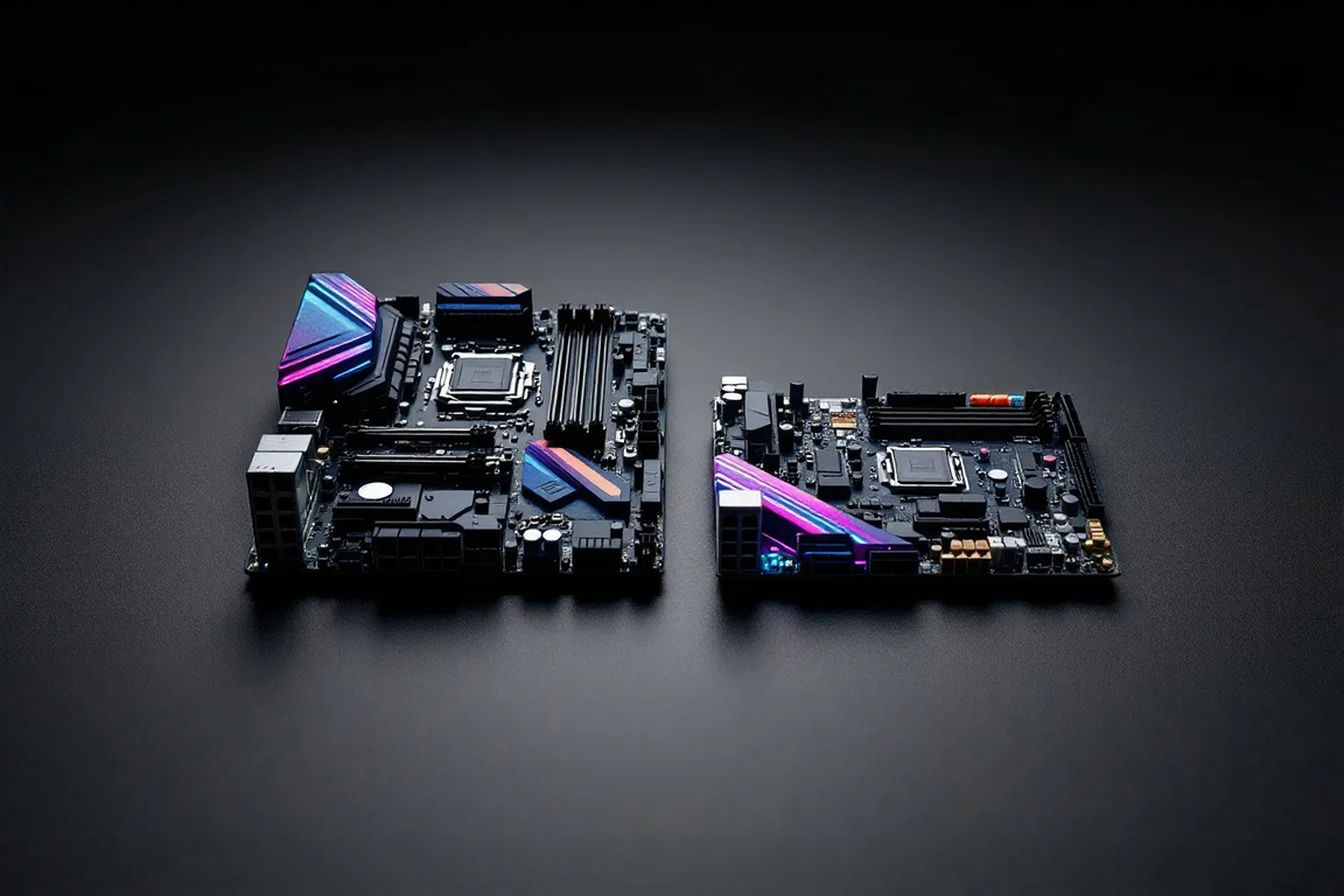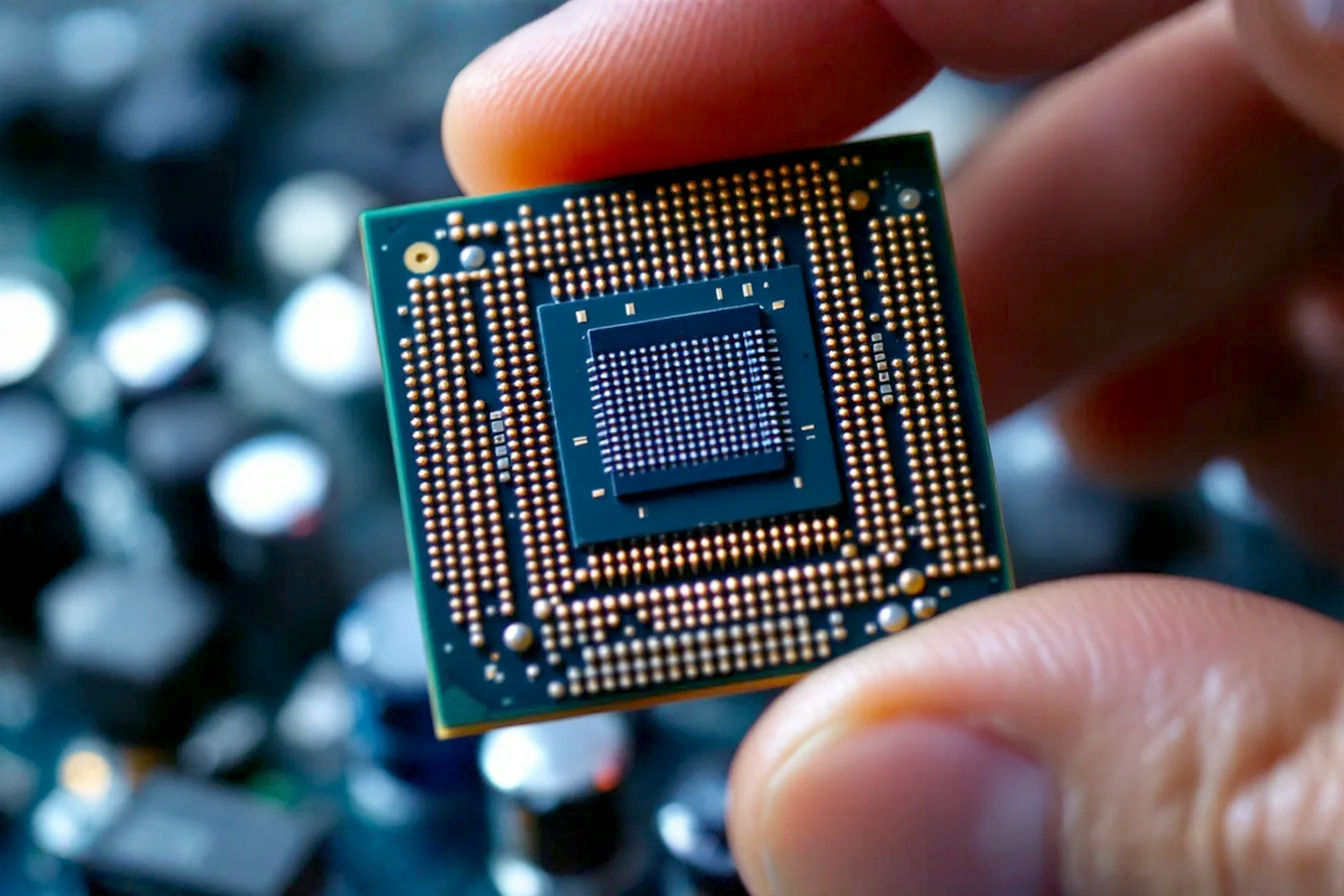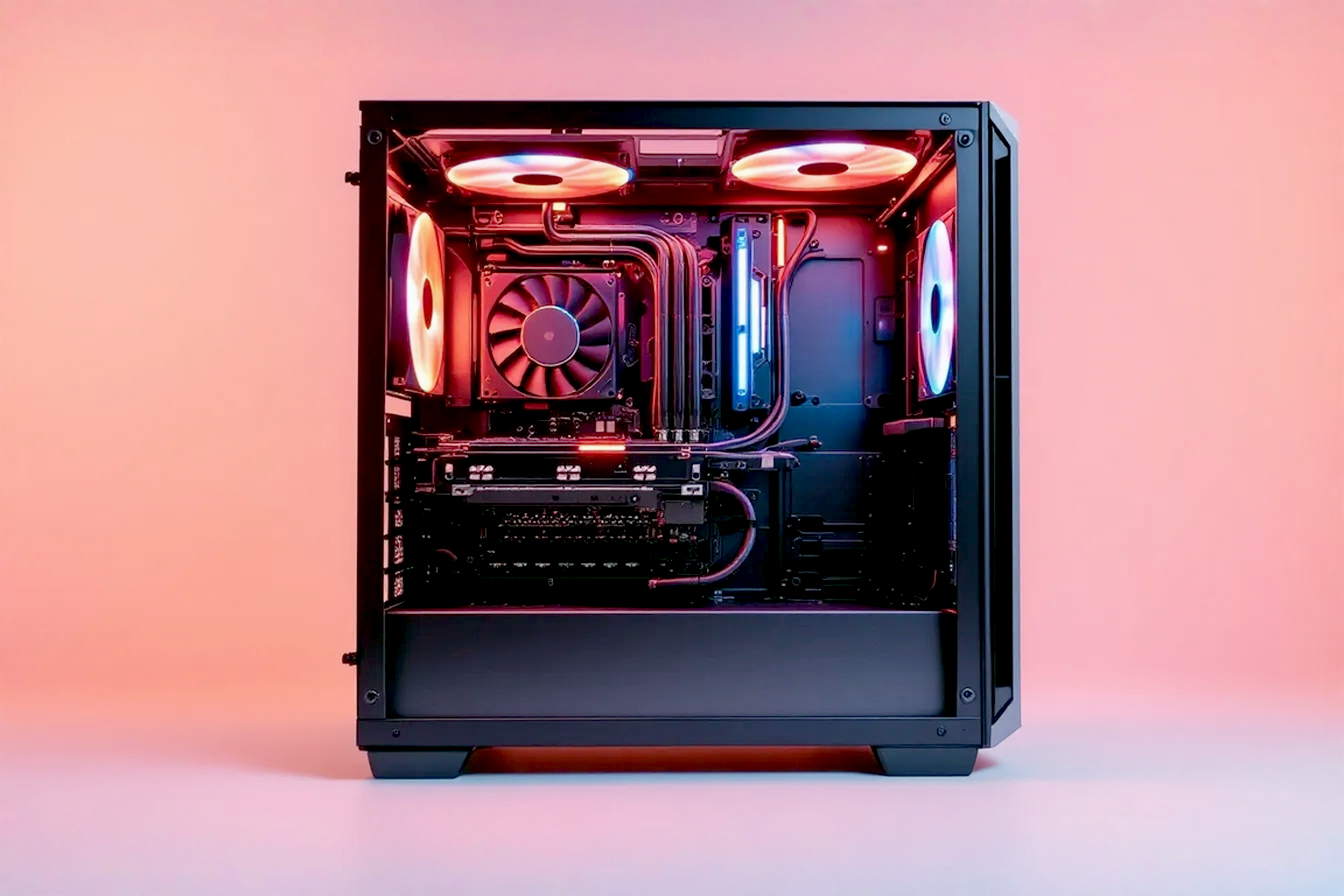This post may contain affiliate links. If you make a purchase through these links, we may earn a commission at no additional cost to you.
Last Updated: May 21, 2025
Introduction: Navigating the Evolving CPU Market
The world of Central Processing Units (CPUs) is in constant motion. It’s a realm of relentless innovation, fierce competition, and, importantly for all of us, fluctuating prices. Whether you’re a gamer chasing peak frame rates, a professional needing a powerful workstation, or simply looking to upgrade your home PC, understanding CPU price trends is crucial. These trends can significantly impact your budget and the performance you get for your money.
This article will serve as your guide through the complex landscape of CPU pricing for the next 12 months, roughly from mid-2025 to mid-2026. We’ll dive deep into the myriad factors that pull CPU prices up or push them down. We’ll explore what major players like Intel and AMD have in store with their upcoming product lines and how global events and manufacturing realities shape the silicon in your machine. By the end, you’ll have a clearer picture of what to expect and how to make smarter purchasing decisions in this ever-evolving market.
I. The Current Landscape: Setting the Stage for CPU Prices (Early-Mid 2025)
Before we look forward, it’s helpful to understand where we currently stand. The CPU market in early to mid-2025 is a fascinating mix of cutting-edge technology, maturing product lines, and the echoes of recent global events.
A. Recent Price Behavior: A Look Back to Understand the Present
The past couple of years have been a rollercoaster for PC components, and CPUs were no exception. We saw periods of significant shortages, largely stemming from the COVID-19 pandemic’s impact on supply chains and a surge in demand. This led to inflated prices and limited availability. However, as we moved through 2024 and into early 2025, the market has largely stabilized.
Supply chains have become more robust, and manufacturing capacity has caught up with, and in some cases exceeded, immediate demand for certain segments. This has led to more predictable pricing and better availability for consumers. We’ve seen prices for many existing CPU models, particularly those from previous generations (like Intel’s 13th Gen or AMD’s Ryzen 7000 series launched in 2022/2023), settle at or even below their original Manufacturer’s Suggested Retail Prices (MSRPs).
For instance, popular mid-range CPUs that were hard to find or overpriced a year or two ago are now readily available, often with attractive discounts during sales periods. High-end CPUs from the last generation have also seen price cuts as newer models begin to enter the market. This normalization is a welcome relief for PC builders and upgraders. However, the launch prices for the very latest generation CPUs, especially those touting significant performance gains or new features like enhanced AI capabilities, often debut at premium price points.
B. Key Market Segments and Their Sensitivities
Not all CPUs are created equal, nor are their markets. Different segments respond to price changes and market forces in unique ways.
1. Consumer Desktop CPUs (Gaming & General Use)
This is perhaps the most visible segment. Gamers and general PC users are often price-sensitive but also performance-aware. The DIY PC building community thrives here, and demand can be influenced by new AAA game releases that push hardware requirements. Prices in this segment are highly competitive. A $20-$50 difference can sway a buyer between an Intel Core i5 and an AMD Ryzen 5, for example. We often see aggressive promotions and bundle deals, especially as a product line matures.
2. Laptop CPUs (Mobile Computing)
Laptop CPU pricing is less direct for consumers, as the processor is part of a larger package. However, the underlying CPU cost heavily influences the final laptop price. Original Equipment Manufacturers (OEMs) like Dell, HP, and Lenovo are the primary buyers, purchasing in bulk. Their purchasing power can influence CPU manufacturers’ pricing strategies. The release cycles of new laptop models, often tied to back-to-school seasons or holiday periods, also dictate demand and can impact overall CPU production focus. In this segment, there’s a critical balance between raw processing power and power efficiency to maximize battery life, which adds another layer to CPU design and cost.
3. Workstation CPUs (Professional Content Creation, Engineering)
Professionals in fields like video editing, 3D rendering, and scientific computing rely on workstation CPUs. These users typically demand high core counts, robust stability, and specific feature sets (like ECC memory support). While still budget-conscious, this segment is generally less price-sensitive than the consumer desktop market if the performance and reliability justify the cost. Value, in terms of time saved and productivity gained, is a major driver. Processors like AMD’s Threadripper or Intel’s Xeon W-series fall into this category.
4. Server CPUs (Data Centers, Cloud Computing)
The server CPU market is a behemoth, driven by the insatiable demand from data centers and cloud service providers (hyperscalers like AWS, Google Cloud, Microsoft Azure). Purchases are made on a massive scale, and the Total Cost of Ownership (TCO) – which includes power consumption, cooling, and density, not just the initial chip price – is a paramount concern. Performance per watt and reliability are critical. Intel’s Xeon and AMD’s EPYC lines dominate this space, and their pricing strategies are tailored to large-volume contracts and long-term service agreements.
II. Core Factors Driving CPU Price Fluctuations in the Next 12 Months
Predicting CPU prices isn’t like gazing into a crystal ball; it’s about understanding the complex interplay of various powerful forces. Over the next 12 months, several key factors will shape the cost of the processors we buy.
A. Manufacturing and Supply Chain Dynamics
The journey from raw silicon to a functioning CPU is incredibly complex and expensive. Any disruption or change in this journey directly impacts the final price.
1. The Role of Foundries: TSMC, Samsung, and Intel Foundry Services (IFS)
Most CPU companies, like AMD and Nvidia (for GPUs, which share similar manufacturing processes), are “fabless.” This means they design their chips but outsource the actual manufacturing to specialized companies called foundries.
- TSMC (Taiwan Semiconductor Manufacturing Company) is the undisputed leader, manufacturing chips for Apple, AMD, Nvidia, and many others. Their technological prowess and massive capacity (holding around 65% of the global foundry market share in late 2024) give them significant influence. Any decisions TSMC makes regarding capacity expansion, new technology adoption, or pricing directly ripple through the market.
- Samsung Foundry is another major player, but it has faced challenges in matching TSMC’s yields (the percentage of good chips per wafer) and technology adoption pace for the most advanced nodes. They manufacture chips for Qualcomm and sometimes for their own internal needs, but their market share (around 9-10%) is considerably smaller than TSMC’s.
- Intel Foundry Services (IFS) is Intel’s attempt to become a major foundry for other companies, alongside manufacturing its own CPUs. This is a long-term strategy, and while Intel is investing heavily, IFS is still working to build trust and capacity to compete effectively with TSMC. Their success could eventually introduce more competition at the high end of manufacturing.
The move to smaller, more advanced manufacturing nodes (like 3-nanometer, 2-nanometer, and beyond) is a critical factor.
- Simplified Explanation: Think of a node as the “fineness” of the manufacturing process. Smaller numbers mean smaller transistors, which means more transistors can be packed onto a chip, leading to better performance and/or power efficiency. However, making these tiny transistors is incredibly difficult and expensive.
- Technical Explanation: Each new node generation requires significant R&D investment and new, more precise manufacturing equipment. Extreme Ultraviolet (EUV) lithography machines, essential for current advanced nodes, are a prime example. These machines, primarily supplied by ASML, cost around $350 million each. The photolithography masks used to pattern the circuits on silicon wafers for a 3nm process can cost $30-50 million per set. A single 300mm silicon wafer processed at a 3nm node can cost between $20,000 and $25,000 to fabricate, before even accounting for design, testing, and packaging costs. Lower yields on newer nodes (meaning more defective chips per wafer) also drive up the cost of usable chips.
Foundry capacity and lead times are also crucial. If demand outstrips available foundry capacity, prices can rise. Long lead times (the time between ordering chips and receiving them) can also cause supply chain friction. Foundries are constantly trying to balance investment in new, expensive fabs (a new 3nm-capable fab can cost $15-20 billion) with uncertain future demand.
2. Geopolitical Influences and Supply Chain Resilience
The semiconductor supply chain is global and thus susceptible to geopolitical shifts.
- National Initiatives: Governments worldwide now recognize the strategic importance of semiconductors. The US CHIPS and Science Act and the European Chips Act are multi-billion dollar initiatives aimed at boosting domestic research, development, and manufacturing to reduce reliance on Asia. These investments will take time to bear fruit but could reshape the global manufacturing map in the long run.
- US-China Tech Tensions: Ongoing trade and technology disputes between the US and China continue to create uncertainty. Export controls on advanced semiconductor manufacturing equipment and AI chips to China can impact global supply and demand dynamics, and potentially lead to bifurcated technology ecosystems.
- Diversification Efforts: The concentration of advanced chip manufacturing in Taiwan (primarily TSMC) is a significant geopolitical concern, especially given tensions with mainland China. There’s a global push to diversify manufacturing locations, with countries like India, Vietnam, and Japan attracting investment for new fabs and assembly/testing facilities. This diversification aims to make the supply chain more resilient to regional disruptions.
- Taiwan’s Critical Role: Despite diversification efforts, Taiwan, and TSMC specifically, will remain central to cutting-edge CPU production for the foreseeable future. Any instability in the region could have severe consequences for global CPU supply and prices.
3. Raw Materials and Component Costs
CPUs aren’t just made of silicon.
- Silicon Wafers: The highly purified silicon wafers used as the base for CPUs need to be of exceptional quality. While silicon itself is abundant, the process of creating these defect-free wafers is complex. Fluctuations in wafer availability or price can affect CPU costs.
- Other Materials: Various chemicals, gases, and metals are used in the manufacturing process. The substrates and materials used for CPU packaging (the physical casing that connects the silicon die to the motherboard) also contribute to the final cost. Shortages or price spikes in any of these components can add pressure.
B. Technological Advancements and New Product Cycles
The tech industry never stands still. New CPU generations are always on the horizon, bringing performance improvements and new features, but also influencing pricing across the board.
1. The Next Generation is Coming: Intel and AMD Roadmaps
Both Intel and AMD have aggressive roadmaps, and the next 12-18 months will see significant product transitions.
- Intel:
- Arrow Lake: Expected to be more widely available in early to mid-2025, Intel’s Arrow Lake architecture is anticipated to bring notable performance improvements, particularly through a new tile-based (chiplet) design and potentially enhanced on-chip AI capabilities via more powerful Neural Processing Units (NPUs). These will likely target the mid-to-high-end consumer desktop and mobile markets. Initial pricing will probably be at premium levels, consistent with new-generation launches.
- Panther Lake: Following Arrow Lake, Panther Lake is expected later in our forecast window (perhaps late 2025 or early 2026). This generation will likely build upon Arrow Lake’s foundations, possibly moving to an even more advanced manufacturing node (like Intel’s 18A process) and further refining AI capabilities.
- AMD:
- Zen 5: AMD’s Zen 5 architecture (powering Ryzen 8000/9000 series CPUs, depending on naming) is currently rolling out or has recently launched. These CPUs are already showing strong performance, especially in multi-threaded workloads and gaming (with new X3D variants). Their pricing and market reception will heavily influence Intel’s competitive response.
- Zen 6: Looking further ahead, AMD’s Zen 6 architecture is anticipated for a 2026 release, so we might start seeing more concrete details and early performance indicators towards the end of our 12-month forecast period. Rumors suggest Zen 6 could bring another significant leap in core counts (potentially up to 24 cores for mainstream desktop CPUs on the AM5 platform) and further improvements to its chiplet design and 3D V-Cache technology. The AM5 socket platform is expected to support Zen 6, offering an upgrade path for existing AM5 users.
The launch of these new generations typically follows a pattern: flagship high-end models arrive first at premium prices, followed by mid-range and budget options over subsequent months. As new generations arrive, prices for previous-generation CPUs usually decrease, creating buying opportunities for those who don’t need the absolute cutting edge.
2. The Slowing of Moore’s Law and Its Economic Impact
For decades, Moore’s Law (an observation by Intel co-founder Gordon Moore) stated that the number of transistors on a microchip doubles approximately every two years, while costs are minimized. This drove exponential increases in computing power at decreasing costs.
- Simplified Explanation: It used to be relatively predictable and (comparatively) cheaper to make chips much more powerful every couple of years. Now, it’s getting much harder and way more expensive to achieve those same leaps in transistor density.
- Technical Explanation: We’re approaching the physical limits of how small transistors can be made using current silicon-based technology. The R&D costs to overcome these challenges are skyrocketing. While transistor counts are still increasing, the pace is slowing, and the cost per transistor is no longer falling as rapidly, and in some cases, it’s increasing for the most advanced nodes. This economic shift means that CPU manufacturers can’t rely on easily shrinking transistors to boost performance and lower costs simultaneously. Instead, they are increasingly turning to architectural innovations like chiplet designs (where multiple smaller, specialized dies are connected to form a single CPU), advanced 3D packaging techniques, and new materials to continue delivering performance gains. These alternative approaches also have their own R&D and manufacturing complexities and costs.
The “death” of Moore’s Law is often debated, but its economic implications are real: future performance gains will likely come at a higher incremental cost than in the past. This could mean that CPU prices for cutting-edge performance may rise or stay elevated for longer.
3. The Rise of AI and NPUs (Neural Processing Units)
Artificial Intelligence is rapidly moving from the cloud to our personal devices. AI PCs are the new buzzword, and CPUs are central to this shift.
- Many new CPUs from Intel (starting significantly with Core Ultra “Meteor Lake” and continuing with Arrow Lake/Panther Lake) and AMD (Ryzen AI) now include dedicated Neural Processing Units (NPUs). An NPU is a specialized accelerator designed to handle AI and machine learning tasks much more efficiently than a general-purpose CPU or even a GPU in some cases.
- These NPUs can power features like real-time language translation, advanced image and video editing effects, improved system optimization, and more responsive virtual assistants, all running locally on your device rather than relying on cloud servers.
- The inclusion of capable NPUs adds complexity and silicon area to the CPU die, which can increase manufacturing costs. However, manufacturers are betting that consumers will be willing to pay a premium for these enhanced AI capabilities. Early studies suggest this might be true, especially if the AI features provide tangible benefits in productivity or user experience. Over the next 12 months, we’ll see how this trend plays out in CPU pricing and marketing.
4. Platform Costs: DDR5, PCIe 5.0/6.0, and Motherboard Chipsets
A CPU doesn’t exist in a vacuum; it’s part of a larger platform that includes the motherboard and RAM. The cost of these components can indirectly influence CPU purchasing decisions and perceived value.
- DDR5 Memory: The transition from DDR4 to DDR5 RAM is well underway. DDR5 offers higher bandwidth and potentially lower power consumption, but it has generally been more expensive than DDR4. As DDR5 production matures and adoption increases, prices are becoming more competitive, but it’s still a factor in the overall cost of a new PC build, especially for AMD’s AM5 platform, which exclusively uses DDR5. Intel platforms have offered more flexibility with DDR4 or DDR5 support on some chipsets.
- PCI Express (PCIe): PCIe 5.0 is becoming standard for connecting graphics cards and high-speed NVMe SSDs, offering double the bandwidth of PCIe 4.0. Some high-end platforms are even looking towards PCIe 6.0. While beneficial for future high-performance components, motherboards and devices supporting these newer standards tend to be more expensive.
- Motherboard Chipsets: New CPU generations often launch alongside new motherboard chipsets. These chipsets can offer new features and improved connectivity, but high-end motherboards can be very costly, sometimes rivaling the price of the CPU itself.
- Socket Longevity: AMD has committed to supporting its AM5 socket through 2025 and likely into 2026 (with Zen 6), which is a plus for users wanting an upgrade path without needing a new motherboard. Intel has historically changed sockets more frequently, though recent generations have seen some socket compatibility. Longer socket life can make the initial platform investment more palatable.
These platform costs add to the total expense of building or upgrading a PC. If platform costs are high, buyers might opt for a slightly cheaper CPU to balance their budget, or delay upgrades altogether.
C. Market Demand and Economic Factors
Beyond the silicon itself, broader economic conditions and demand from various sectors play a crucial role.
1. Consumer Spending and Economic Climate
The global economic outlook influences consumer and business spending.
- Inflation and Disposable Income: If inflation remains elevated or a recession occurs, consumers may have less disposable income for discretionary purchases like PC upgrades. This could dampen demand and put downward pressure on prices for mainstream components.
- Consumer Confidence: General consumer confidence in the economy affects buying decisions. Optimistic consumers are more likely to invest in new technology.
- Upgrade Cycles: The average PC upgrade cycle is typically 3-5 years. Many people who bought PCs during the pandemic-driven surge in 2020-2021 might be starting to consider upgrades in the 2024-2026 timeframe. This could create a wave of demand.
2. Demand from Key Sectors
Different sectors have different needs and buying patterns.
- Gaming: The gaming market remains a strong driver for high-performance CPUs. New, demanding game titles and the desire for high refresh rates and resolutions keep gamers upgrading. The popularity of esports also contributes.
- Data Centers & Cloud: This is a massive growth area. The explosion of AI workloads, cloud computing, and data storage requires vast numbers of powerful and efficient server CPUs. This segment’s demand can influence overall foundry capacity allocation and R&D focus for CPU manufacturers.
- Enterprise & Business: Businesses undergo regular PC refresh cycles. The adoption of new operating systems (like Windows 11/12) or the need for enhanced security and AI capabilities can trigger these upgrades.
3. Competition: The Intel vs. AMD Battle (and emerging Arm?)
Healthy competition is generally good for consumers, often leading to better products at lower prices.
- Intel vs. AMD: The rivalry between Intel and AMD is intense across all market segments. Both companies aggressively compete on performance, features, and price. AMD has made significant market share gains in recent years, particularly in the DIY desktop and server markets, forcing Intel to respond with more competitive pricing and products. This dynamic is expected to continue, benefiting consumers.
- Current trends (early 2025) show AMD continuing to gain ground in server and desktop segments, while Intel maintains a strong position in laptops, though AMD is also making inroads there.
- The Arm Factor: While Intel and AMD dominate the x86 CPU market for PCs, Arm-based processors (like those found in smartphones and tablets) are making a serious play for laptops. Qualcomm’s Snapdragon X Elite chips, for example, are designed to offer competitive performance and excellent battery life for Windows laptops. Apple’s success with its M-series Arm-based chips in MacBooks has also demonstrated the potential. If Arm-based CPUs gain significant traction in Windows laptops, it could pressure Intel and AMD to adjust their pricing and product strategies, particularly in the ultraportable and mainstream laptop segments. The impact on desktop CPUs is less clear in the short term but is a development worth watching.
III. CPU Price Predictions for the Next 12 Months (Mid-2025 to Mid-2026)
Based on the factors discussed, let’s venture some predictions for CPU prices over the next year. Remember, these are forecasts, and unforeseen events can always shift the landscape.
A. Intel CPU Price Forecast
Intel is in a crucial period, launching new architectures like Arrow Lake and Panther Lake while also building out its foundry services.
1. High-End (e.g., Core i9, future “Ultra” equivalents)
- New Generations (Arrow Lake, early Panther Lake): Expect these to launch at premium MSRPs, similar to or slightly higher than previous flagship launches (e.g., $550-$700+ range). The justification will be performance leadership and advanced AI capabilities.
- Price Stability/Slight Increases: For the newest top-tier offerings, prices are likely to remain firm for the first 6-9 months post-launch, especially if they deliver benchmark-topping performance.
- Older High-End Models (e.g., 13th/14th Gen Core i9): As Arrow Lake and Panther Lake become established, expect significant discounts on remaining stock of 13th and 14th Gen high-end CPUs. These could become excellent value propositions for those not needing the absolute latest tech, potentially dropping 20-30% below their original MSRPs.
2. Mid-Range (e.g., Core i5, i7)
- Competitive Pricing: This segment is Intel’s bread and butter and faces intense pressure from AMD’s Ryzen 5 and 7. New generation (Arrow Lake) Core i5 and i7 models will likely launch at prices designed to be highly competitive (e.g., Core i5 in the $250-$350 range, Core i7 in the $350-$450 range).
- Value Proposition: Intel will need to balance the price of new mid-range CPUs against the strong value offered by discounted previous-generation models and AMD’s offerings. We might see aggressive promotional pricing or bundles.
- Sweet Spot: This will remain the sweet spot for many gamers and mainstream users. Expect prices to be relatively stable after initial launch, with gradual declines as the product cycle matures.
3. Budget (e.g., Core i3, lower-tier models)
- Older Generations Dominate: The budget segment will likely continue to be served by older generation Core i3s (e.g., 12th/13th Gen) and potentially new, lower-core-count versions of more recent architectures. Prices here could fall below $150, even approaching $100 for capable entry-level CPUs.
- New Budget Options: If Intel releases new budget CPUs based on Arrow Lake, they’ll need to be priced very aggressively (likely $100-$180) to compete with AMD’s budget AM4 and potential entry-level AM5 options.
B. AMD CPU Price Forecast
AMD has enjoyed strong momentum with its Zen architectures and will look to continue this with Zen 5 and the anticipation of Zen 6.
1. High-End (e.g., Ryzen 9, Threadripper)
- Zen 5 and Zen 6 Anticipation: Current high-end Zen 5 Ryzen 9 CPUs (e.g., 7900X/7950X successors) will likely hold their launch MSRPs (e.g., $450-$700 range) if demand remains strong. As Zen 6 approaches, we might see some strategic price adjustments, but AMD typically doesn’t discount its flagship products heavily until the next generation is imminent.
- X3D Variants: AMD’s 3D V-Cache equipped X3D CPUs (e.g., Ryzen 7 7800X3D, Ryzen 9 7950X3D successors) will continue to command a premium price due to their exceptional gaming performance. These often launch $50-$100 above their non-X3D counterparts.
- Threadripper: For the High-End Desktop (HEDT) market, Threadripper prices will remain high, reflecting their massive core counts and professional target audience.
2. Mid-Range (e.g., Ryzen 5, Ryzen 7)
- Strong Value: AMD is known for its strong price-to-performance ratio in the mid-range. Expect new Zen 5 Ryzen 5 and 7 models to continue this trend, likely launching in the $200-$300 range for Ryzen 5 and $300-$400 for Ryzen 7.
- Competitive Adjustments: Prices will be sensitive to Intel’s Arrow Lake offerings. AMD is usually quick to adjust pricing or offer promotions if it feels it’s losing ground in this crucial segment.
- AM5 Platform Cost: The overall cost of the AM5 platform (DDR5 memory, AM5 motherboards) will continue to be a factor. AMD might implicitly price its mid-range CPUs to help offset these higher platform costs compared to its older AM4 platform.
3. Budget (e.g., Ryzen 3, older AM4 options)
- AM4’s Longevity: The AM4 platform remains an excellent choice for budget builds. Expect CPUs like the Ryzen 5 5600 or Ryzen 7 5700X to see further price drops, potentially falling well below $150 and even approaching $100 during sales. These offer incredible value.
- Entry-Level AM5: AMD will likely introduce more budget-friendly AM5 CPUs (e.g., Ryzen 3 or lower-end Ryzen 5 based on Zen 5). These will need to be priced carefully (perhaps in the $120-$200 range) to entice users to adopt the newer platform over the still-viable AM4.
C. General Market Trends to Expect
Across both brands and the broader market:
- Overall Stability with Generational Shifts: The most significant price movements will occur around new product launches. New generations will debut at established MSRPs, while the outgoing generations will see price cuts to clear inventory. Outside of these transitions, pricing for current-generation products should remain relatively stable.
- AI Premium: CPUs featuring significantly enhanced NPU capabilities or marketed heavily as “AI CPUs” might carry a slight premium or become standard in mid-to-high-tier models. This could gradually increase the Average Selling Price (ASP) of CPUs.
- Sales Events: Major retail holidays like Black Friday, Cyber Monday, Amazon Prime Day, and Newegg’s FantasTech will continue to be prime opportunities for CPU deals. Discounts will be most common on models that are 6-18 months old.
- Used Market Growth: As enthusiasts upgrade to the latest generations, the used market for capable 1-2 generation old CPUs will likely expand, offering another avenue for budget-conscious buyers.
- Impact of Shortages Unlikely (Barring Major Events): Given current foundry capacities and diversification efforts, widespread, prolonged CPU shortages like those seen in 2020-2022 are unlikely in the next 12 months, barring major unforeseen geopolitical or natural disasters. Localized or short-term availability issues for specific popular models at launch are always possible.
IV. Specific Segments: What to Anticipate
Let’s zoom in on how these trends might affect specific user groups.
A. Gaming CPUs: The Performance-Price Balancing Act
For gamers, the calculus often involves getting the best possible frame rates for their budget.
- Key Metrics: Single-core performance, high clock speeds, and ample cache (like AMD’s 3D V-Cache) will remain critical for gaming.
- GPU Synergy: New graphics card releases (from Nvidia, AMD, and potentially Intel) can also spur CPU upgrades, as gamers seek to avoid CPU bottlenecks with more powerful GPUs.
- Value Gaming CPUs: Expect the sweet spot for “best value” gaming CPUs to hover in the $200-$350 range. This will likely include mid-range offerings from both Intel (Core i5) and AMD (Ryzen 5, potentially lower-end Ryzen 7 or X3D models from previous generations). High-end gaming CPUs with top-tier performance (Core i7/i9, Ryzen 7 X3D/Ryzen 9) will range from $400-$600+.
B. CPUs for Productivity and Content Creation
Professionals and prosumers need horsepower for demanding tasks.
- Multi-Core is King: For video editing, 3D rendering, and compiling code, multi-core performance is paramount. CPUs with higher core and thread counts will continue to be favored.
- AI Acceleration: The integration of NPUs could significantly speed up AI-enhanced features in creative software (e.g., Adobe Creative Suite, DaVinci Resolve). This might make CPUs with powerful NPUs more attractive, even at a slightly higher price.
- Workstation-Lite Features: We may see more features traditionally found in workstation CPUs (like support for more PCIe lanes or higher memory capacities) trickle down into high-end consumer platforms, blurring the lines and offering more value. Prices for these “prosumer” CPUs will likely sit between mainstream high-end and true workstation chips.
C. Laptop CPU Price Considerations
As mentioned, laptop CPU prices are embedded in the final device cost.
- Efficiency Battle: The fight for performance-per-watt will intensify, especially in the thin-and-light and ultraportable segments. Intel’s Core Ultra series (and its successors) and AMD’s Ryzen mobile CPUs (with RDNA graphics and Ryzen AI) will compete fiercely.
- Arm’s Influence: The arrival of more competitive Arm-based Windows laptops (e.g., powered by Qualcomm’s Snapdragon X Elite) could put downward price pressure on x86-based laptops in similar categories, particularly if they deliver on promises of comparable performance with superior battery life. This might force Intel and AMD to offer more competitive CPU pricing to their OEM partners for these segments.
- Gaming Laptops: High-performance gaming laptop CPUs will continue to command a premium, as they require significant power and cooling within a constrained form factor.
D. Server CPU Market: Continued Growth and Competition
The server market is a different beast, but its trends can impact overall semiconductor supply and R&D.
- AI Driving Demand: The AI boom is fueling massive demand for server CPUs capable of training and running AI models, often in conjunction with powerful GPUs or other AI accelerators.
- Intel Xeon vs. AMD EPYC: AMD’s EPYC line has made significant inroads into Intel’s traditional Xeon dominance, offering strong core counts and competitive TCO. This competition is expected to keep pricing aggressive for comparable performance tiers.
- Custom Silicon & Arm: Hyperscalers are increasingly developing their own custom silicon (e.g., AWS Graviton, Google Axion, Microsoft Cobalt – many Arm-based) to optimize for their specific workloads. This trend could gradually reduce their reliance on off-the-shelf x86 server CPUs for certain tasks, though x86 will remain dominant for a wide range of applications. The growth of Arm in servers also adds another competitive dynamic.
V. Tips for Buyers: Making Smart CPU Choices in the Next Year
Navigating the CPU market can be daunting. Here’s some advice to help you make informed decisions.
A. When is the Best Time to Buy a CPU?
- Post-New Generation Launch: Typically, 1-3 months after a new CPU generation launches is a good time to find deals on the previous generation, as retailers clear stock.
- Major Sales Events: As mentioned, Black Friday/Cyber Monday (November), Amazon Prime Day (usually July), and other seasonal sales can offer significant discounts, especially on CPUs that are not brand new.
- Assess Your Needs: The “best” time is also when you actually need an upgrade that will tangibly improve your experience. Don’t get caught up in chasing the absolute latest tech if your current setup still meets your needs. Waiting a few months can often save you money or get you more performance for the same budget.
B. Balancing Performance, Price, and Future-Proofing
- Total Platform Cost: Always consider the cost of the CPU in conjunction with a compatible motherboard and RAM. A cheap CPU might require an expensive motherboard, negating savings.
- Longevity: How long do you plan to keep this CPU and system? If you upgrade frequently (every 2-3 years), you might not need to overspend on top-tier components. If you plan to keep your system for 5+ years, investing a bit more upfront for a more powerful CPU and a platform with an upgrade path (like AM5) might be worthwhile.
- AI PC Hype: Consider if the emerging “AI PC” features are relevant to your current or near-future use cases. If not, you might not need to prioritize CPUs with the most powerful NPUs, potentially saving money. This will become clearer as more AI-powered applications become mainstream.
C. Where to Look for Deals and Monitor Prices
- Price Comparison Websites: Use sites like PCPartPicker (which also checks compatibility), CamelCamelCamel (for Amazon price history), or Google Shopping to compare prices across multiple retailers.
- Tech Review Sites: Reputable tech review sites (e.g., Tom’s Hardware, AnandTech, TechSpot, Gamers Nexus) provide detailed performance benchmarks and value assessments, helping you understand if a CPU’s price is justified by its performance.
- Community Forums: Online communities like Reddit’s r/buildapc or r/hardware can be great resources for user experiences, deal alerts, and advice from fellow enthusiasts.
VI. Conclusion: The CPU Price Horizon – Volatility and Opportunity
The next 12 months in the CPU market promise to be dynamic. We’ll see exciting new technologies emerge, particularly with the continued integration of AI capabilities and the launch of next-generation architectures from both Intel and AMD. Manufacturing complexities, geopolitical factors, and economic conditions will continue to exert their influence, creating a landscape of both potential price volatility and significant buying opportunities.
For consumers, this means staying informed is key. Prices for the latest and greatest CPUs will likely launch at premium levels, but patience can be rewarded with discounts on slightly older, yet still incredibly capable, hardware. The fierce competition between Intel and AMD, and the burgeoning influence of Arm in certain segments, should generally work in the consumer’s favor, fostering innovation and keeping a check on runaway prices.
Ultimately, the “best” CPU at the “best” price will depend on your individual needs, budget, and how you time your purchase. By understanding the forces at play, you’ll be well-equipped to navigate the CPU price horizon and make choices that power your computing experiences for years to come. The pace of CPU innovation remains relentless, and that’s something for all tech enthusiasts to look forward to.

